#Robert Space Industries
Explore tagged Tumblr posts
Text

Serene Moon and the Drake Corsair by Roberts Space Industries
90 notes
·
View notes
Note
I’ve seen a lot of people talking about why Nicola and her friend group would help Jake out in the industry. So, here’s just some info about the industry - especially in 2025 where everything is social media based.
For one, the industry is still very much biased towards “nepo babies,” or people who were born with wealth and/or privilege of a family name. Drew Barrymore comes from a long line of famous actors, as does Emma Roberts. They are both talented in their own right, but they had opportunities that others don’t have getting started. If you are not a nepo baby then most of the time you get jobs through social media or connections. Anybody who has a large social media following and may be considered an “influencer” has an established fanbase that supports anything they do, I.e., why they’re called influencers. The first one that comes to mind is Addison Rae who started on TikTok and now has been in a handful of movies and has a popular song out. This is also why you see more and more celebrities take brand deals, like Nicola did with Tatcha. The brand pays her for her following knowing that Nicola has a dedicated fan base that trusts her.
Now, connections. Most actors don’t take the influencer route. CJ and LT don’t even have social media, so there isn’t a fanbase for them to cultivate just from that space. They’ve received their fanbase from the jobs they have booked, which is amazing. The industry is still about who you know, especially if you’re new. Jake got lucky getting casted in a Disney+ show as his first really big role. Through that role, he met Louisa, who has a large circle of artists in the industry. She really took him under her wing and guided him into her circle of friends. This is where he met Jack and Nicola, both who had to start from the bottom to get to where they are. Nicola has said often how much she struggled in her 20s getting roles because she wasn’t a nepo baby and had no connections. She has a lot of advice for young people getting into the industry. Her and Jack have clearly been helping Jake become more popular to get him more roles; probably because they see a lot of potential in him and want him to be successful. Through his connection to Nicola, his SM following has blown up in ways it never would have at this moment in his career. Now, do all of those people following him have good intentions and actually care about his work? Probably not. That’s why I think if Nicola disappears from the picture then everyone wouldn’t care and lose interest before he has a chance to use that attention.
Anyways, that’s my long-winded explanation to show that the industry is still super old school in a lot of ways, but just sprinkles social media in there because it’s popular. I think in a post-Covid world, your social media presence is more important than even being a nepo baby (mostly because nepo babies are already handed a large following).
.
57 notes
·
View notes
Text
Best Books of 2024
All of my favorite reads from last year!
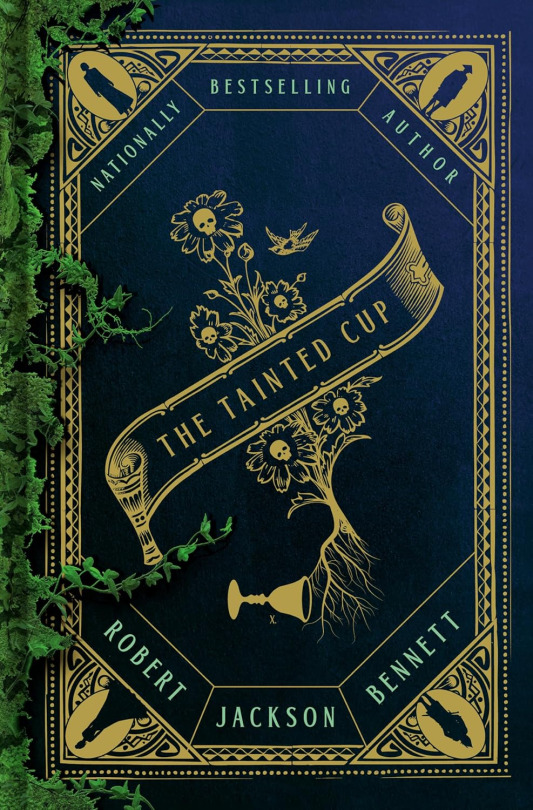
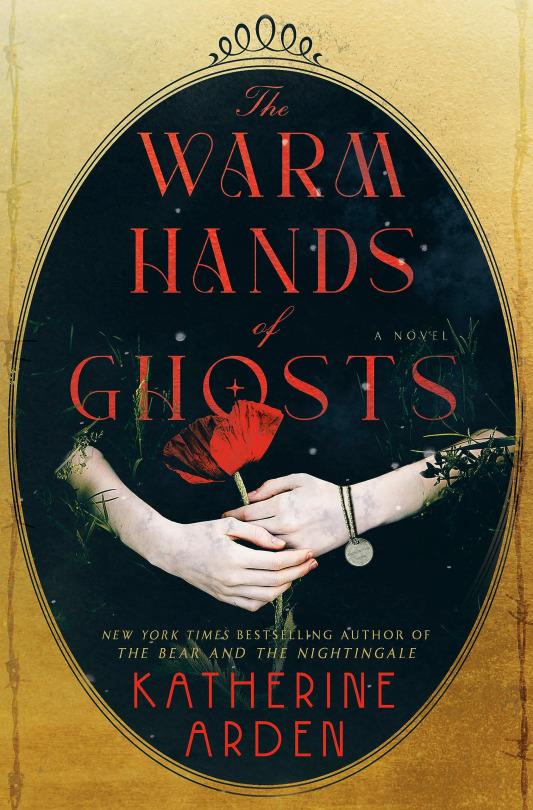
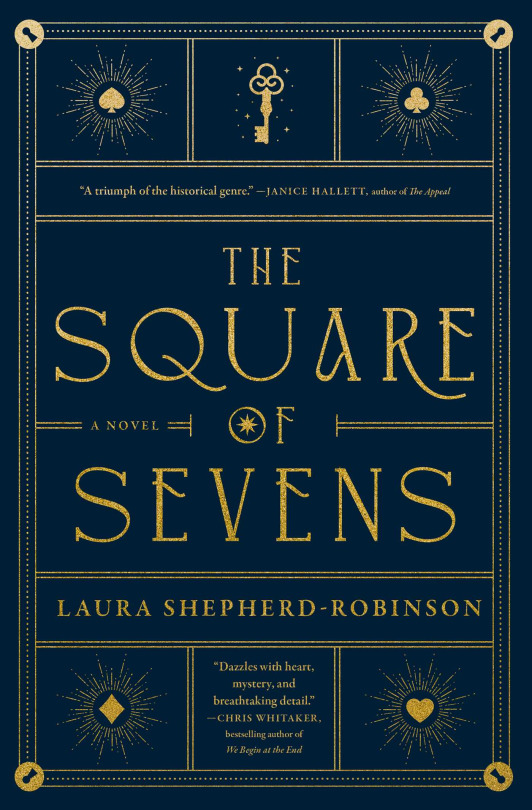
The Tainted Cup, Robert Jackson Bennett. A Sherlock Holmes-style political mystery about a woman investigating a murder in a truly original secondary fantasy world.
The Warm Hands of Ghosts, Katherine Addison. Haunting story about a woman looking for her missing brother who's trapped in a pocket realm on the battlefields of World War I.
The Square of Sevens, Laura Shepherd Robinson. An ingeniously twisted historical fiction thriller about a woman who was brought up as a fortuneteller in the 1730s recounting her past.
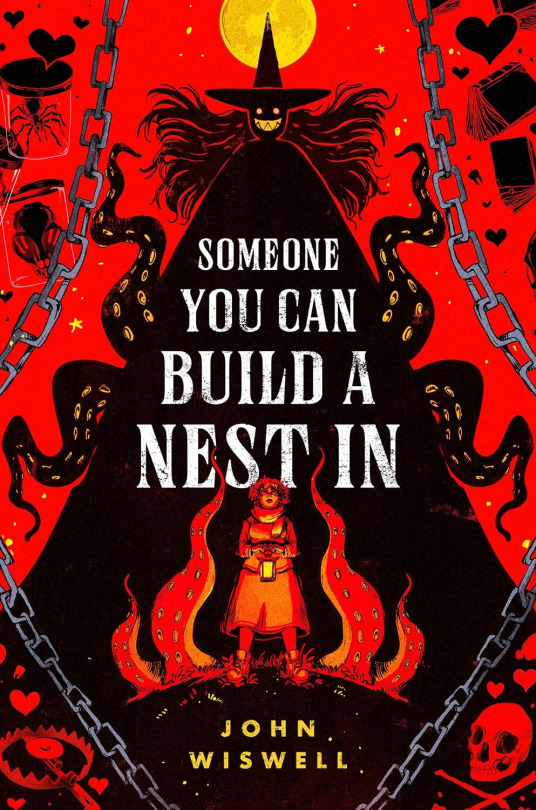
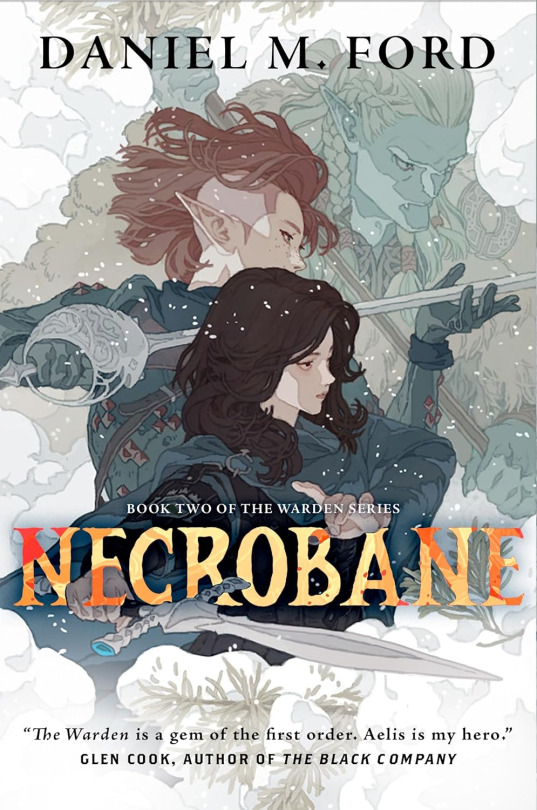
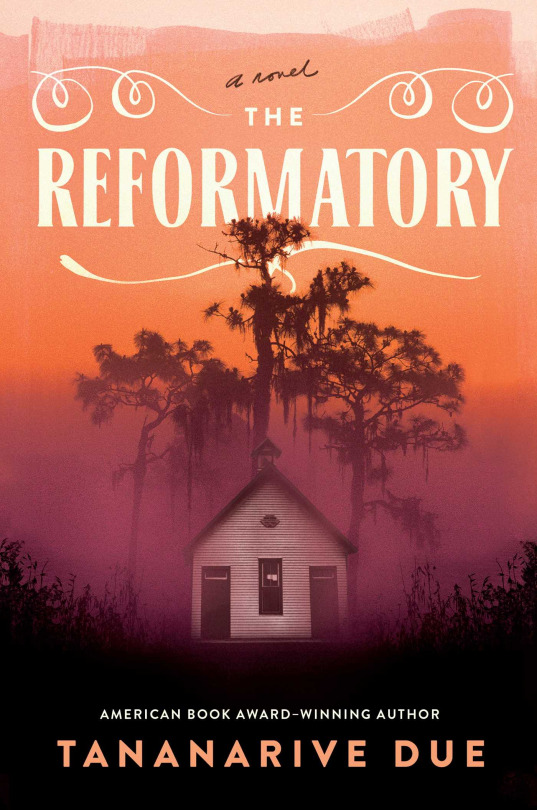
Someone You Can Build a Nest In, John Wiswell. Sapphic body horror gore monster romance that commits to the bit while also somehow being cozy.
Necrobane, Daniel M. Ford. Bisexual necromancer and all-around menace Aelis engages in pulp DnD like adventures as the protector of a rural village. Book 2 of a series.
The Reformatory, Tananarive Due. A Southern Gothic where the real horror is racism about a young boy sent to a prison reform school in the fifties.

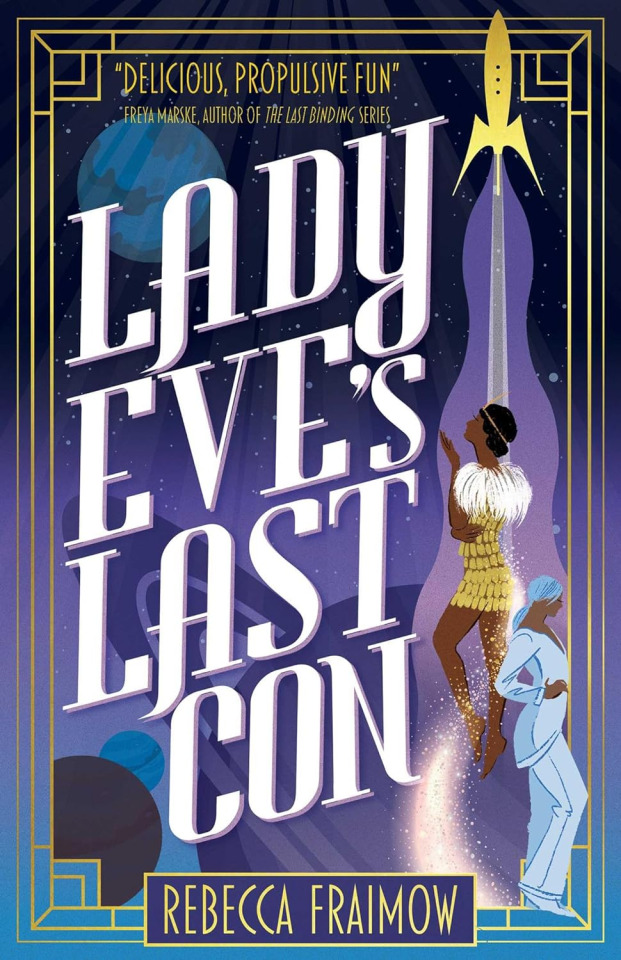
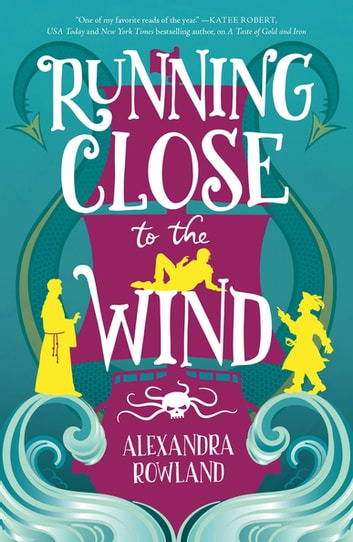
Triple Sec, TJ Alexander. Poly romance about a bartender falling in love with a woman—and then realizing that she's into the woman's partner too.
Lady Eve's Last Con, Rebecca Fraimow. Space opera romcom heist about a woman getting revenge on the man who jilted her sister.
Running Close to the Wind, Alexandra Rowland. An absolute souffle of poly pirate shenanigans. Strong character voice a la Gideon the Ninth that you'll either love or hate.
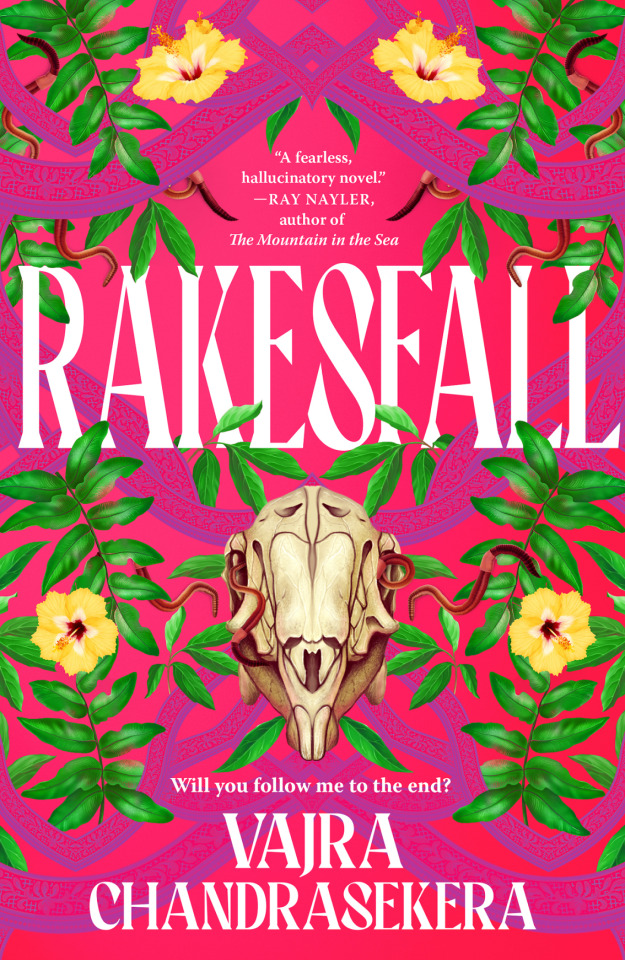
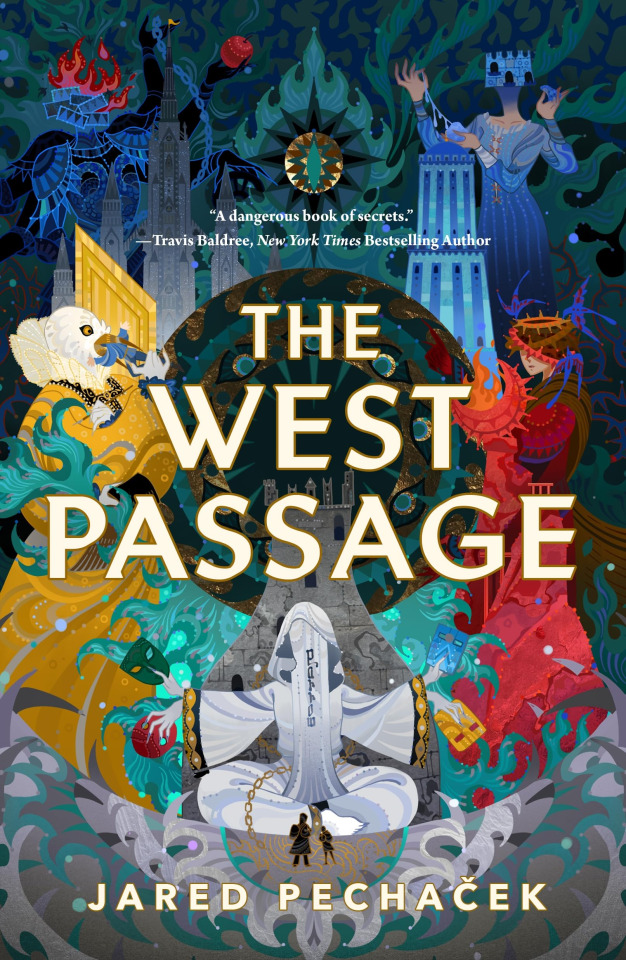

Rakesfall, Vajra Chandrasekera. Let me be honest, I'm not sure I have any idea what happened in this fever dream of a novel, but it was really good.
The West Passage, Jared Pechacek. A deeply strange and original monk book along the lines of Susanna Clarke's Piranesi.
The Scum Villain's Self-Saving System, Mo Xiang Tong Xiu. The most devoted hater of a popular webserial dies mad about it and ends up in the world of the book. A masterpiece of dramatic irony, made me feel insane for at least four months.

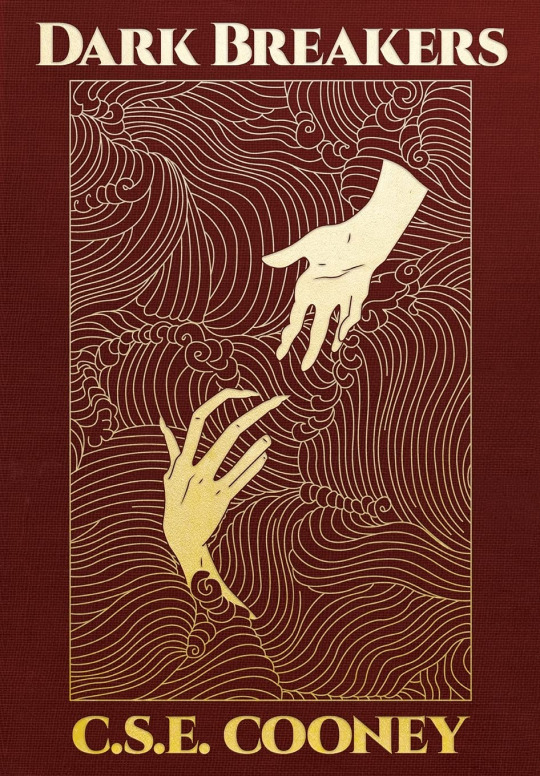
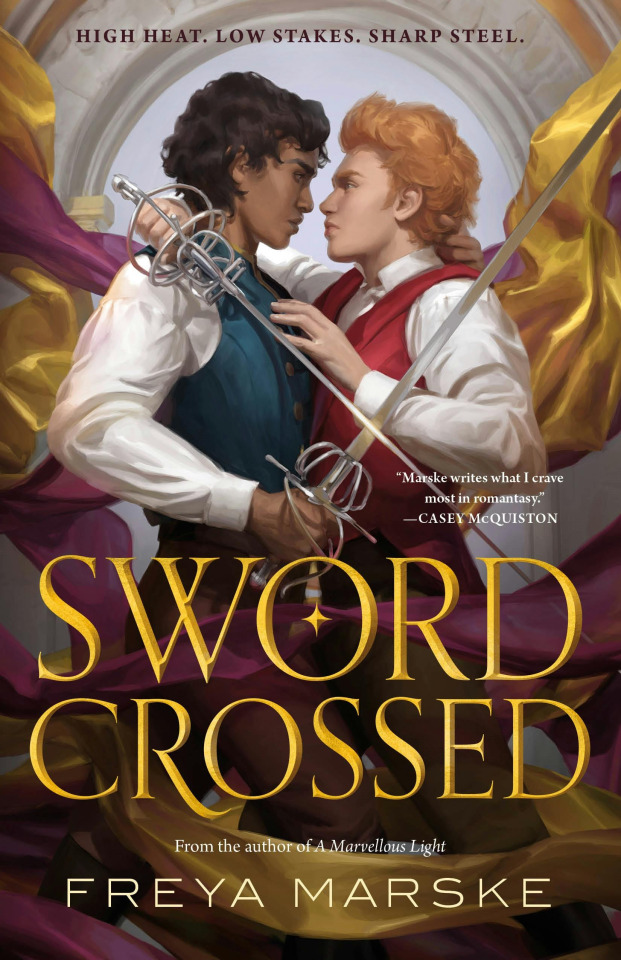
Asunder, Kerstin Hall. Another excellent installment in the guy stuck in your head genre in a wild and original fantasy setting.
Dark Breakers, CSE Cooney. A gorgeous collection of interlinked fairy tale novellas set around the same Gilded Age mansion.
Swordcrossed, Freya Marske. An absolute delight of a gay romcom with a large amount of detail about the fantasy wool industry.
64 notes
·
View notes
Text
newspaper tadc decode

(sorry didn’t crop the image) lap this up decoders and theorists, this is for you!
Time waits for no man — That fact is evident as the Mississuga area receives a major face lifting job. Above is seen the new Port Credit Legion, the Mississuga RD.. near the intersection of Indian RD.. and no. 10 highway, both of which are undergoing construction.
Orbsman Donates 57 Cents To Charity
Toronto’s Township’s richest industrial area, the Sheridan Park Research Community — situated on North Sheridan between the Fifth Line and the western limits of the township and Peel County — is taking shape in a rapid style.
The man in charge of the [BLANK] development of [BLANK]
* It is going much faster than we anticipated, * he said recently.
Later this summer, Atomic Energy of Canada Limited will start construction of a development laboratory to house their Power Projects group about 400 engineers and technicians. Their project will also designing offices for their valuable work.
[BLANK] Nickel.
Sheridan Park scene. They in turn will be followed by Abittibi Power and PaperCo. Lid. Also scheduled for construction later this year is the Ontario Research Foundation’s own building which will be built at the top of Sheridan’s Park picturesque boulevard residence. A multi-storey office building which will literally make a town within a town (of the future) may also be built [BLANK]
The Birth Of A Paper
Welcome to Toronto Township’s newest and brightest weekly newspaper. We take this opportunity to introduce you to the Mississauga news, a regular weekly newspaper designed to serve the people of Toronto Township. Port Credit and Streetsville. Consecrating mainly on the western half of the township and the town of Port Credit at first, the news will strive to expand its circulation boundaries to efficiently bring ALL [BLANK] news of interest to all [BLANK] South Peel.
Unicorn Wanted
With the long awaited release of the Goldenberg Report, Toronato Township ‘big city dream’ of the future now looms as a more distinct possibility all the time.
Township Reeve Robert Speck has already asked that a study be made of this area with the view of forming some type of metro-type plan here. At the present time, the township has its application for town status pending before the Ontario Municipal(?) Board. This application was considered to be the first important step towards ultimately forming a city here with the towns of Port Credit and Streetsville joining up with its township, at some time in the future.
In past discussions between representatives Toronto Township, Port Credit and Streetsville it was a generally agreed amalgamation of these three municipalities would come about in the near future — possibly 4 to 5 years from now.
Any instant ‘amalgamation’, however, was frowned upon by most members of Post Credit and Streetsville councils as they felt such a move would be too much costly for their people right now.
It is not known right at this time what will happen to the township’s application for town status since the suggestion for a complete study of metro-type possibilities here could tangle up this move.
Whatever the future holds for this rapidly growing area, it is crystal clear that Toronto Township — and Port Credit and Streetsville too for that manner — are growing in leaps and bounds. Post Credit is growing up, changing the heart of its-
Police Hunt Two Gunmen Following Payroll Robbery
-area into a high rise sector: Streetsville has plans for expansion in all directions and Toronto Township itself is a bee-hive of industrial and residential growth.
The Sheridan Park Research Centre — known as Canada’s space age city — is rapidly taking shape and the long range forecast is that it will eventually be a $100,000,000 scientific complex with new developments all around it.
And, to make the whole picture even that much more exciting, you and I are right in the middle of this overall plan.
Township Puts Skids On Skateboards
Toronto Township passed a resolution Monday that a bylaw be prepared to prohibit the use of skateboards on public sidewalks and roadways in the township.
A number of members of council have expressed some concern over the hazards which go hand in hand with the use of ‘ski’s on skates’.
The Township’s Traffic
(Continued on page 13)
Korny Papers
A Broadway producer who went to the doctor for a checkup was told, “You’ll have to give up on wine and women - you can sing as much as you want to. “
#tadc#the amazing digital circus#kinger#pomni#ragatha#jax#gangle#tadc ep 4#tadc episode four#zooble#caine#tadctheory
42 notes
·
View notes
Text

roberts space industries is employing catgirls to send me verification codes
134 notes
·
View notes
Text
Are You My Father? Chapter 3!
Chapter Title: Nervous as an Heir
Summary: The Fenton family now knows for sure who the real father is for Danny and Jazz.
Chapter Word Count: 1,646
You can read on AO3 or down below the cut
It was a good thing that this all started on a Saturday. Tucker spent so long making sure Danny, not only knew who Bruce Wayne was, but also felt really dumb for not knowing already.
Not that Tucker was being particularly mean about it, but there was a lot Danny already knew, he just hadn't made the connection yet.
For example, he knew of Wayne Tech. Tucker often brought it up whenever they invented something cool or made some advances in the scientific community.
He also knew of Wayne Industries because it helped build the Justice League’s space station. He had been very invested in that when it was being built and watched the launch when it was ready for space.
The thing he didn’t realize was that this was the same Wayne.
It was really obvious in retrospect.
He felt so dumb.
Sam, on the other hand, filled Danny in on everything she knew and could find about Bruce himself.
Like how he seemed to be a hot gossip celebrity along with this successful business guy. The kind that had a new girlfriend every weekend and was always at every big party.
Despite looking sort of similar to Danny, he didn’t think they had anything in common at all.
He just really hoped he wasn’t some kind of secret supervillain or something.
Then again, Bruce seemed to take in orphans sometimes so at least he wouldn’t be completely clueless about how to talk to talk to teenagers. Also probably wasn’t evil if he was nice enough to do that.
In the end, the trio was up all night and into the morning. It was nice that it wasn’t because of ghosts.
The downside of this paternal revelation happening over the weekend, was that they had to wait until Monday to talk to anyone at the clinic and then wait several “business days” while they “processed the request”.
Needless to say, his mom was one minor inconvenience away from completely losing her mind during the wait. Jazz was constantly talking her down from driving to the clinic and processing the DNA herself.
It was the following weekend and he was hanging out at Tucker’s playing video games when he got the call with an update.
“We got the answer.” His mom said instead of a greeting.
“Oh?” was all Danny could think to say.
“You can still stay the night at Tucker’s, but tomorrow we're going to Gotham.”
“Okay,” Danny said, unsure how he was supposed to feel.
Part of him was still hoping the mix-up hadn't actually affected him at all. He had been hoping that nothing had changed.
He had hoped those random rich kids who looked more like his dad than he did were just wrong.
They weren’t.
He wasn’t genetically a Fenton after all.
He was a Wayne.
He had no idea if that was a good or a bad thing.
===============================================
The next morning Danny’s family was packed up into the Fenton RV and started their estimated 12-hour journey to Gotham.
His dad had offered to drive the rich kids back home, but they said they already had plane tickets.
Danny wasn’t sure what part of the offer they disliked more, having to cram into the car with them or just driving there in general.
Danny hadn’t expected them to have stayed as long as they had. Turns out they had a nice time getting to know their bio-dad.
Jack had even come up with nicknames for most of them before they left.
The oldest, Robert, didn’t seem to be a big fan of being called Bobby, but once all the other kids got their nicknames he stopped fighting it. That, or maybe it was because Jack refused to call him anything else.
The second oldest, Jacqueline, quickly became Jackie. She, unlike her half-brother, seemed to like her nickname a lot.
Veronica was able to avoid being called Vicky by quickly suggesting Nickie instead after Robert got stuck with Bobby.
Her twin Haydon was able to avoid getting a nickname, or at least Danny never heard one for her. Then again, Brody didn’t get one either.
The youngest, Theo ended up being called Teddy. Getting that nickname was the first time Danny saw the kid smile.
Danny got himself a little more comfortable in his spot in the RV and wondered if Bruce was going to be as stiff and reserved as the rich kids were.
He really hoped not, but the only rich adults he knew were Vlad and Sam’s parents. They weren’t exactly easy-going or super friendly.
Then again, assuming all rich people are the same would be stereotyping and he’d be friends with Sam long enough to know that was a bad idea.
In the end, Danny wasn’t sure what to expect, and all the not knowing just made him more anxious about what could happen.
===============================================
Due to speedy driving, the Fenton family arrived in Gotham hours ahead of schedule.
“Hey Mom,” Jazz said as they passed the welcome to Gotham sign, “do you have the number for the hotel we’re staying at? We should call to let them know we’re early.”
“We don’t have a hotel,” their mom replied simply.
“I am not sleeping in this RV the whole time we're here.”
“Oh don’t be silly. Just because we don’t have a hotel doesn't mean we have nowhere to stay.”
“Then where are we staying?” Danny asked.
“Why at our new buddy Bruce’s place of course!” Jack said with a grin.
“Bruce Wayne invited us to stay with him?” Jazz asked.
“Technically, the butler did,” Maddie added.
“He has a butler?” Danny asked.
“Are you really that surprised about the butler?” Jazz asked. “He’s super rich. Of course, he has a butler.
“Vlad doesn't have one.”
“I think we know why that is,” Jazz said not quiet enough for her parents not to hear her.
“You do?” Jack asked obliviously.
Thankfully their mom had an explanation, “He doesn't like it when people touch his things. Don’t you remember how territorial he got in the lab in college?”
Their dad remembered that and then a bunch of other stuff from the good old days, which is when Danny stopped paying attention. He knew more than enough about Vlad already, he didn’t want any more of the rose-tinted glasses version.
He looked out the window and found it interesting that Gotham seemed so much more like a city than Amity Park did.
All the buildings here seemed taller and closer together. There were statues and stone carvings all over everything. If all the eyes of the crowded streets weren’t enough, the walls could stare at you too.
The city also seemed to come in layers. There were tons of bridges over other streets and not just over rivers like back home. He didn’t see many city buses but he did notice a lot of train tracks above him with commuter trains. He wondered if they’d have time to take the train somewhere while they were here, he hadn’t been on one before. The only trains that came to Amity Park were freight trains.
Well, and the circus that one time. He didn’t like to think about that.
Instead, he shifted his gaze upwards only to see that the way the clouds gathered overhead made it look like it was all just concrete and metal all the way up to the sky.
He sighed in disappointment realizing there was no way he was even going to see the moon, let alone the stars. He hoped it wouldn’t be overcast like this the whole time they were here.
“Psst, Danny.”
“Yeah,” He said as he turned towards his sister.
“I was doing some research on Mr. Wayne,” she started once she had his attention.
“Did you find any red flags?” he half-joked.
“Of course not,” she dismissed quickly.
“Really?”
“Well there’s a few things I’ve noted, but I have to make my own observations first to be sure.”
“Should I be worried?”
“No, it’s fine.”
He didn’t believe her for a second. He wasn’t going to say that though.
“So what did you find?” he said instead.
“I think Mr. Wayne has more in common with Sam than he does Vlad.”
That wasn’t something he expected to hear. He had a strong feeling it wasn’t what she meant, he couldn’t help but picture Bruce Wayne and Sam completely goth-ed up and hanging out in that poetry place she likes, drinking expensive coffee.
“Yeah, you see Vlad has what’s called new money, which is basically getting rich yourself. While Wayne and Sam have old money, which is basically being born rich because your parents or grandparents were rich.”
“That’s a good thing right?”
“I’m not sure if it’s good or bad, per se. Just that he has different life experiences than we do.”
“Jazz, I don’t think anyone has had a similar life experience to us.”
She looked towards their parents in the front seat, “Good point.”
There were a few moments of silence before Danny asked something Jazz that had been nagging at him for a while.
He tapped her knee to get her attention.
“Do you think he’ll like us?”
“Why wouldn’t he like us?”
“I don’t know. We’re just some random midwestern kids and he’s this fancy East Coast rich guy. We probably don’t have anything in common. He’s gonna think we’re lame or something.”
“Danny, I think you might be overthinking this.”
“You sure?”
“If anything, this will be kind of awkward for everyone and something we'll laugh about a few years from now.”
“So you don't think it's going to be a big deal or anything?”
“It's going to be fine. Try to enjoy the experience.”
“I’ll try,” Danny said with a sigh as he turned to look out the window again, “but I’m not making any promises.”
59 notes
·
View notes
Text
Aubrey Plaza’s Husband, Jeff Baena, Dies by Suicide: A Closer Look at the Tragedy and Its Impact

The entertainment industry is reeling after the tragic death of filmmaker Jeff Baena, who was married to actress Aubrey Plaza. Baena, known for his work on films like The Little Hours and Horse Girl, passed away by suicide on January 4, 2025. His sudden death has sparked widespread grief and conversations about mental health in Hollywood and beyond.
Who Was Jeff Baena?
Jeff Baena was an accomplished screenwriter and director, celebrated for his unique approach to storytelling. Born on June 29, 1977, in Miami, Florida, Baena studied film at New York University before embarking on a career in Hollywood. He began his journey as an assistant editor under acclaimed filmmaker Robert Zemeckis and later transitioned into screenwriting and directing.
Notable Works
Baena’s career highlights include a mix of quirky, offbeat comedies and emotionally resonant dramas:
Life After Beth (2014): A zombie comedy starring Aubrey Plaza and Dane DeHaan.
Joshy (2016): A dark comedy that premiered at the Sundance Film Festival.
The Little Hours (2017): A medieval comedy featuring an ensemble cast, including Aubrey Plaza, Alison Brie, and Dave Franco.
Horse Girl (2020): A psychological drama co-written with Alison Brie, praised for its nuanced portrayal of mental health.
Aubrey Plaza and Jeff Baena: A Creative Partnership
Aubrey Plaza and Jeff Baena were more than just husband and wife—they were creative collaborators who frequently worked together. The couple met in the early 2010s and began dating before marrying privately in 2021.
Collaborative Projects
Plaza often starred in Baena’s films, bringing his distinct narratives to life with her versatile acting. Their partnership was a testament to their mutual respect and shared passion for storytelling.
A Private Love Story
Despite their public personas, the couple maintained a relatively private life, choosing to focus on their work and relationship away from the limelight.
Details Surrounding Jeff Baena’s Death
News of Baena’s death broke on January 4, 2025, with reports confirming that he died by suicide. TMZ, CNN, and KTLA have reported on the tragedy, citing sources close to the family.
Statement from Aubrey Plaza
Aubrey Plaza released a heartfelt statement through her publicist, expressing her grief: "Jeff was my rock, my partner, and my greatest inspiration. This loss is unfathomable, and I ask for privacy as I navigate this painful time."
Mental Health Awareness
The news has prompted an outpouring of support for Plaza and renewed discussions about the importance of mental health awareness, particularly in high-pressure industries like entertainment.
The Industry Reacts
Hollywood has rallied around Aubrey Plaza and Jeff Baena’s family, with tributes pouring in from colleagues and friends:
Alison Brie: “Jeff was a genius and a kind soul. His loss is immeasurable.”
Dave Franco: “Working with Jeff was an honor. He was one of the most genuine people I’ve ever met.”
Judd Apatow: “Jeff’s creativity and spirit were infectious. He will be deeply missed.”
Raising Awareness: Mental Health in Hollywood
Baena’s death has highlighted the mental health challenges faced by individuals in creative fields. Studies show that those in entertainment often grapple with high levels of stress, isolation, and public scrutiny.
Resources for Support
Organizations like the National Suicide Prevention Lifeline (1-800-273-TALK) and The Trevor Project offer support for individuals in crisis. Advocates are urging the industry to prioritize mental health resources and create safe spaces for open dialogue.
Jeff Baena’s Legacy
Though his life was tragically cut short, Jeff Baena’s artistic contributions will continue to resonate. His films, known for their originality and emotional depth, leave a lasting impact on audiences and the industry.
Aubrey Plaza’s Future
As fans mourn alongside Aubrey Plaza, many express hope that she will find solace in her late husband’s legacy and her creative pursuits.
Final Thoughts
Jeff Baena’s death is a profound loss for both his loved ones and the entertainment world. His work as a filmmaker and his partnership with Aubrey Plaza serve as a reminder of the power of creativity and love. As conversations about mental health continue, his passing underscores the need for compassion, understanding, and support for those struggling in silence.
#Jeff Baena#Aubrey Plaza Husband#Jeff Baena Death#Mental Health Awareness#Hollywood Tragedy#Life After Beth Director#The Little Hours Filmmaker#Jeff Baena Suicide#Aubrey Plaza Statement#Mental Health in Hollywood#Joshy Movie#Horse Girl Film#Jeff Baena Legacy#Aubrey Plaza Tribute#Suicide Prevention Resources
9 notes
·
View notes
Text
CHICANO ART MOVEMENT visits: “Rasquachismo” 2024
On Saturday 05/11/24, we visited Huntington Beach Art Center to view “Rasquachismo” in the city of Huntington Beach, California.
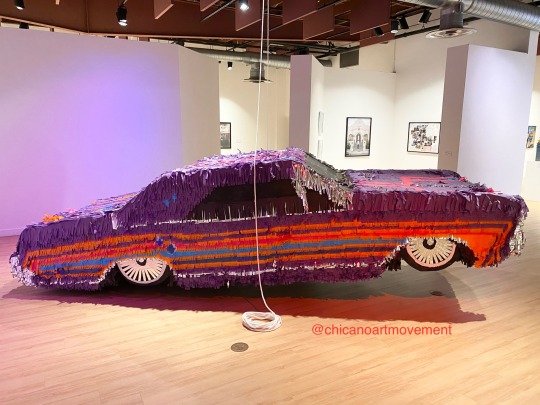
(“Beyond Timeless” by Justin Favela, 2022)
We learned from the mission statement that: “‘Rasquachismo,’ [is] a multi-media exhibition celebrating the aesthetics and transformative power of Lowriders. Featuring work by William Camargo with Alkaid Ramirez, Justin Favela, Stephanie Mercado, Arturo Meza Il, Aaron Moctezuma, Jose Manuel Flores Nava, Alicia Villegas-Rolon, and Cora J. Quiroz.”
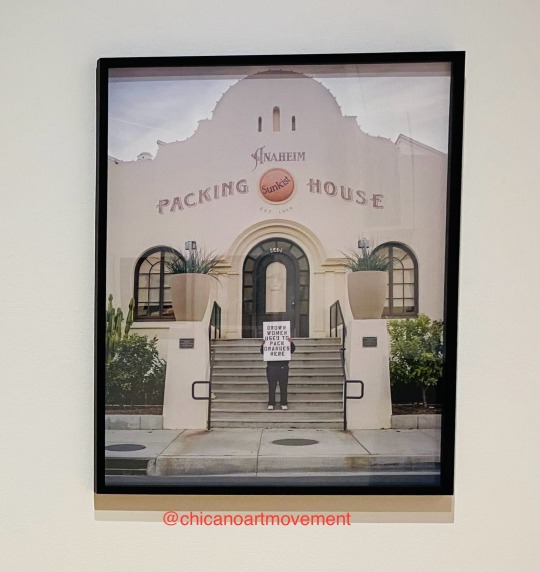
(“Anaheim in Flux” by William Camargo with Alkaid Ramirez, 2024)
“Emerging from the barrios of Southern California, lowriding brought forth a long resistance against the American Dream and dominant idealist norms that attempted to anglicize the young Chicanx individual. Forces of the Anglo-American culture did all it could to disrupt and omit the lowrider. From individual traffic stops to passing county-wide laws, all were attempts to take the lowrider off the streets. Low and slow, their metallic bodies transfigured in response. Now, unapologetically visible, lowriders glisten in candy-colored paint and dance with the aid of hydraulics. The power of lowriding extends beyond the car's aesthetics, however. It has become a rasquachismo expression of Mexican-American, and, eventually, Chicanx identity.”

(“Highland Park” by Stephanie Mercado, 2023)
A favorite of Robert’s at the “Rasquachismo” exhibit was Stephanie Mercado’s “Highland Park.” Through a little research, we learned that “‘Highland Park’ honors the cultural richness of the area including its history, diversity, and its valuable contributions to the broader arts and culture sector of Los Angeles. Utilizing imagery and icons sourced from the neighborhood, this piece celebrates the enduring local landmarks and showcases the architectural diversity that defines the area. Simultaneously, it pays homage to the artists and art spaces that have played a vital role in making Highland Park a vibrant and lively neighborhood for generations.”
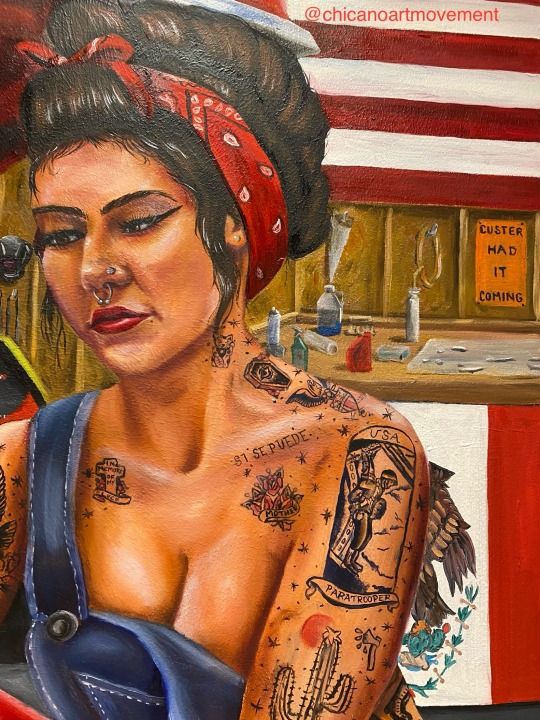
(Detailed view of “We Can Dream” by Cora J. Quiroz, 2022)
From the museum ephemera, we learned that this painting entitled “We Can Dream” by Cora J. Quiroz is part of a series called “Not Your Typical Rosie.”
The artist states: “I paint women in a way that removes them from being acquiescent muses in typical artworks. From action, body language, and clothing, to expression, I ensure the women I paint have active roles of inspiration, movement, and storytelling. Raised by my mother, I learned about my family’s history through oral tradition. Rather than beng inspred by male-dominated stories in media, I became inspired by the Indigenous and Mexican women of my family, taking spaces where they were not expected.
The simplest acts typical for a man to perform, can often be taboo for women, such as working in the car industry. Despite this, for many years there have been women who have gone against the grain to become whoever they pleased to be, going beyond the WWII icon associated with strong women. These are the stories that inspire my work.”
(“El Cuento de los Panes: A Community Installation Inspired by Dr. Tomás Ybarra-Frausto” organized by the Exhibition Design students at Laguna College of Art and Design, 2024)
The exhibition statement shares that the term rasquachismo was “coined by Chicano scholar and art critic Tomás Ybarra-Frausto to describe ‘an underdog perspective, a view from los de abajo’ (from below) in working class Chicanx communities which uses elements of ‘hybridization, juxtaposition, and integration’ as a means of empowerment and resistance.”
The Huntington Beach Art Center presents “Rasquachismo” curated by Laura Black until June 1st, 2024 with their last programming event of an artist discussion is set for Saturday May 25th, 2024 from 1pm to 2:30pm.
#rasquachismo#huntington beach#chicano art#contemporary art#chicana art#photography#oil paintings#orange county#hb#car culture#california art#mixed media art#art history#chicanx
20 notes
·
View notes
Text
https://www.nytimes.com/2024/03/21/magazine/elsbeth-cbs-review-good-wife-good-fight.html
The most-watched streaming series of 2023, it turns out, was “Suits.” All your faves — the conceptually and emotionally difficult ones, the family-trauma dramedies, the zombie soaps and franchise space operas — were as dust in comparison with a bouncy basic-cable legal procedural. If Gen Z viewers are looking at the buffet of TV content and choosing old-school blue-sky procedurals over “Succession” or “The Mandalorian,” what becomes of the world all these streamers and premium-cable networks worked so hard to build?
CBS might have the answer, and her name is Elsbeth Tascioni. This defense attorney, played by Carrie Preston, was a beloved guest character on “The Good Wife” and its sequel/spinoff, “The Good Fight,” both created by the network veterans Robert and Michelle King. Tascioni is, in the parlance of today’s internet, a “weird little guy.” Outfitted in blaring patterns and carrying numerous quilted tote bags at all times, she is both hard to miss and easy to overlook. She appeared in just under 20 episodes across both series but delighted fans as one of the strangest and funniest running gags in two series already filled to the brim with running gags and high-wattage guest stars. Where Julianna Margulies on “The Good Wife” is all elegance and eroticism, Elsbeth is kooky and oddly mannered. Where Christine Baranski on “The Good Fight” is all gravitas and moral outrage, Elsbeth is non sequiturs and slapstick — a whimsical agent of chaos, an odd bird among all those silken and self-serious lawyers.
Now she has her own show, “Elsbeth.” The previous entries in the Kings’ trilogy took place in Chicago, but “Elsbeth” sends Tascioni to take Manhattan, Muppet-style. Without any of her former co-stars to contextualize her, she begins as a fish out of water. She has been tasked with observing a police precinct after a series of wrongful arrests and other violations (and, secretly, with collecting evidence for a corruption case). She wriggles her way into ongoing investigations, stymying police detectives and, almost always, proving them to be arrogant dummies. She is, in other words, an annoyance. Nearly everyone she meets reacts the same way: Who is this strange woman, and what is she doing here? Viewers might ask the same. Why would anybody greenlight a spinoff about a minor character who appeared in a smattering of episodes of two moderately successful series over a period of 14 years? Who is this strange woman, and what is she doing here?
The answer is that Elsbeth Tascioni, and the oddball detective procedural in which she now lives, exist because Robert and Michelle King know what they’re doing. They have always been particularly self-conscious creators of network procedurals, working in a kind of uncanny valley: The shows are immersive, dramatic crowd-pleasers, but they are also playful, ironic, even occasionally postmodern in their building out of intellectual property. “Elsbeth” isn’t just a spinoff; it’s a spinoff about spinoffs.
From the perspective of what we can now call the “Good Wife” Televisual Universe, the very existence of “Elsbeth” is a pretty funny joke. It is a canny management of the industry’s obsession with reused intellectual property, but it is also a satisfying mockery of it, a rogue spinoff that has become self-aware. Elsbeth isn’t just a fish out of water in Manhattan. She’s a fish out of water on her own show.
This estrangement is embedded in the visual language of the show. Subway ads for the series featured a shot of uniformed police officers, a burly polyester wall, with Preston seemingly poking her head in from out of frame, wearing a pink overcoat, a crocheted scarf and a foam Statue of Liberty crown. This is Elsbeth, they announced: Nobody knows who she is, but she certainly doesn’t belong here. Scenes in the show itself are often blocked as though a passing tourist has happened upon the filming of a “Law & Order” episode, butted her way into the scene and ended up solving the murder. At the start of the third episode, we see a row of bystanders behind caution tape on a dark Manhattan street, their bodies a gray woolen barrier — until we spot a soft pom-pom bobbing up and down behind them, straining for a view. That’s Elsbeth, who must crouch and sneak through a forest of legs to get to her crime scene. There’s a series of shots, repeated in several episodes, in which a central-casting homicide detective is interviewing an eyewitness; the camera moves back and forth, capturing the interviewee at a lower angle and the commanding cop at a higher one, until the diminutive Elsbeth invariably scoots her way into the cop’s frame, taking it over from beneath. They never see her coming.
The core joke of “Elsbeth” is its own wobbly preposterousness, the way its protagonist is at odds not only with the other characters but also with the show that’s nominally built around her. In ways both too cute and really quite ingenious, Elsbeth Tascioni keeps disrupting a boilerplate CBS police procedural already in progress. The characters themselves notice this: The first three episodes have been layered with double entendres, reaching a boiling point in an episode revolving around a “Real Housewives”-style reality series. Elsbeth tells a producer: “I don’t think I’d do well on television.” Later, the producer lashes out at her: “You have no idea how hard it is to make good TV, Miss Tascioni, and you never will.” One detective questions not just the character but the show: “Elsbeth? What kind of name is that?” In a particularly sharp moment, the guest star Jane Krakowski simply stops the action to tell Elsbeth: “You I don’t get at all. I don’t get who you are or what you actually do.”
These lines are both nervous tics and statements of blithe confidence. They are also one droll reason for why the show works: It’s in a constant, comical state of existential crisis.
A hallmark of the Kings’ series is their mischievous messing with established formats; they play with genre in order to destabilize it, asking us to rethink concepts like justice or the binary of good and evil. With “Elsbeth,” they may aim to mount an unassuming critique of TV-cop propaganda. (Elsbeth is almost always right, while the police are almost always blinded by cockiness and self-assurance, having never once questioned their own purpose.) But it strikes me that you could just as easily see this as a show that’s interested less in the police than in the industry that keeps making shows about them.
The Kings have already made self-referential shows about lawyers and cops and priests and senators, dramas and satires and erotic thrillers about the lofty and corrupt institutions that structure our world. Is television itself not an institution worthy of such critical minds? When “The Good Wife” ended, several critics called it the last great network drama — a designation that, in retrospect, says as much about the networks as it does about the drama. Elsbeth does not belong in a CBS procedural; she is a time traveler from an antique land before the boom of Peak TV, before our current era of algorithmic austerity. Thus far, her show is a relatively simple one, but the Kings do not have a reputation for keeping things simple. What if they made a show about their own institution, a self-referential tale about an industry that holds itself in such low regard that it imagines its product could be made by artificial intelligence rather than writers and showrunners? An industry that mourns the loss of “The Good Wife” but would never greenlight it today? That show might focus on a figure dressed in bright colors, gazing in wonder at aspects of the world that other characters never stop to notice, carrying overstuffed tote bags filled with new ideas to a place that scorns color and wonderment and ideas. Nobody would ever see her coming.
7 notes
·
View notes
Text
She Took Off West, I Think That's What She Did
🎵

The sun was starting to set when Sweetjane arrived at her new home in Oasis Springs, Arizona, making the sky burn red like a nuclear ray.
Almost two years prior, her husband had died in a head-on collision. After that moment, Willow Creek never felt the same. It seemed like everywhere she turned there was a memory. Then the debts started to arrive. Joel and herself were too young to think about life insurance, let alone a will, despite their profession being the funerary business. She couldn't turn to her parents for help, they had never approved of Joel and had all but disowned her. She was lucky that they were invited to Christmas and Easter, but her parents stayed distant.
After all, she had married not only a gadjo but a gadjo who was a 4th generation mortician. They barely tolerated her plans to become a funeral director, saying she was just waiting to invite beng into their home. It was not until she had convince them that she intended to help the grieving living and the more business side of the industry did they begrudgingly approve.
She had found herself apprenticed under a Robert Stepford, owner of the Stepford WIllow Funeral Home. His son, Joel, was also apprenticed under him and soon she was more than just learning from the Stepford family. It was a pregnancy scare that forced them into a marriage that she believes neither of them were prepared for. Not long after they were wed, Robert started to display severe dementia and so Joel had to continue the business in his place.
They had 4 somewhat tumultuous years that Sweetjane doesn't like remembering. In fact, around the time he had died she was contemplating a divorce. He mostly kept his drinking under control until that fateful night he wanted to stay at a party with their friends. She had left in her own car, praying that they'd have the sense to let him stay. But they hadn't, and she was woken by a knock on the door at 4:32 in the morning. Her husband was dead, and she was alone.
Her parents did start to let her back in and her siblings helped when they could, so long as she didn't bring her business with her to their homes. Then the collectors came knocking, and she had no choice but to sell the funeral home that was also the house she and Joel lived in. She moved in with her brother.
It was Sue's idea really. Or well, he was the one that lit the spark in her brain with a single question.
"What do you want more than anything in this whole wide world? Do you want money, do you want sex, or do you want all that success?"
She thought about that herself. What did she want? At the moment, she wanted to leave Willow Creek. Maybe she could find the answer elsewhere, but it definitely was not in Willow Creek, or even the Great State of Louisiana. So she took to the realty sites and found it. A duplex for rent in Oasis Springs, Arizona. It was a two day drive from them, close enough for her to visit with enough preparation but far enough from the painful memories and for her to have the new experiences she craved.
All that travel had left her with the stolen knight statue from the front of the funeral home, her meager belongings, and $1.800 dollars in her bank account. The knight statue wasn't technically stolen because it did belong to her husband's family but was part of the things forfeited by the bank. However it was important to Joel's family and so she couldn't part with it.

It was the kind of place space explorers would have landed in 1963, when Kennedy was in Life magazine and everything was aquamarine. That image is what drew her to the town and so now that she is here, maybe she will finally find the answer to her brother's question.
What is you want most in the whole wide world?

***
Start / Chrono / Next
Restarting again! Hopefully I will not mess up this time (already starting to put this save on my backup hard drive just in case).
I'm using a different save file this time too! It's one of Pleasant Sims' fixed lore saves. I've added quite a lot to Oasis Springs:

All of these builds (Except for the duplex which I built) I got from the gallery and have saved to my tray. I also wrote down their original creators in the section of my notebook I use for sims stuff. I downloaded sims from the Maxis profile on the gallery to help populate the town.
The sim that lives above her in the Duplex is Johnny Zest, and her neighbors are Chet and Kev Chorduroy (Like Father, Like Bro) in Agave Abode and Kurt Lumberjackson in the other house.
#the ledet legacy#sweetjane ledet#legacy founder#gen 1#the sims 4#ts4#ts4 legacy#sims 4 legacy#the sims#the sims legacy#the og legacy challenge#sims of color#romani sims
9 notes
·
View notes
Text
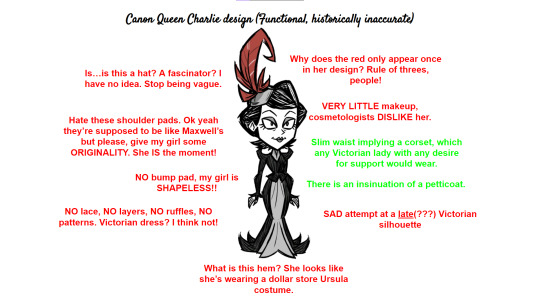
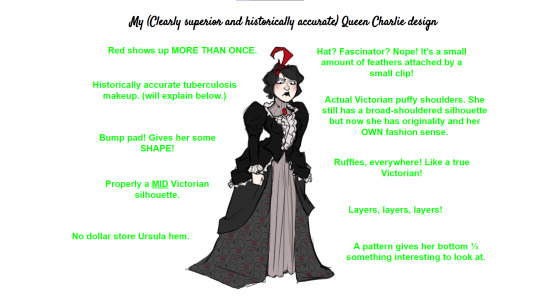
To clarify, I don't HATE the canon design. I just think that there were a lot more interesting things they could have done.
I cannot believe how much is MISSED in the canon design. Like a lot of history EXISTS in fashion. I will be addressing some of points in greater detail here.
The makeup is my favorite bit of Victorian era trivia. Tuberculosis was an incredibly common and deadly virus that Charlie definitely would have known about and understood. And it's impact on fashion is very interesting. In 1882, Robert Koch discovered how tuberculosis spread, and then everyone lost their shit. Like masks for covid, people began changing what they wore to accommodate. And also people really liked how women who had contracted tuberculosis looked. Pale skin, red cheeks, dark lips, and a thinner face shape became standards of fashion that still remain to this day. Charlie would have for sure kept up with this trend herself, regardless of it's odd origin.
A large staple of the Victorian aesthetic in general is an excess of detail. This was the time of the industrial revolution and things like fabric could finally be made in extremely large amounts for a much lower cost. Statement fashion was no longer for JUST the upper crust, now EVERYONE had a gaudy outfit to wear. If Charlie REALLY wanted to command respect, she would be wearing something with a style that says "I have a LOT of money to spend!".
It's also important to understand the difference between a LATE Victorian and a MID Victorian silhouette. Mid Victorian silhouettes have a more bell like shape. Another fashion trend that resulted from tuberculosis and the discovery of germs was a raised hemline for dresses. After people learned that they could get sick from tracking filth in their homes, they no longer wanted to wear clothes that dragged around picking up dirt from outside. This had the additional effect of kickstarting the women's shoe fashion industry, but that's beside the point. Late Victorian silhouettes had a slimmer shape near the calves, much like Charlie's canon design. Both mid and late Victorian outfits utilized bump pads to add shape to the rear end, same with Edwardian. Yes, Charlie would have seen and probably worn clothes with a late Victorian silhouette, but a mid Victorian silhouette would command power through age. It's appearance is old enough to exude a more studious air, but not so old as to look like an old lady's clothes. Not only that but a larger silhouette takes up more space in a room and generally make her appear more important.
I hope you enjoyed my excuse to info dump Victorian era trivia! It's one of my favorite things to learn about!
#dst#dst charlie#dont starve together#charlie dst#i am so normal about the victorian era ughh#i have so much more info to share and not enough brainpower to share it
120 notes
·
View notes
Text
National personification
The UK has Britannia. France has Marianne. The US have Uncle Sam. National personifications, summing up supposed collective qualities and passing on a message, both to citizens and foreigners alike. Instantly recognizable by just about anyone. To be found everywhere, from city halls (busts, frescoes, tapestries) to subway walls (Army conscription posters - of course it rings a bell!).
Romania has this:

This is Revolutionary Romania, as seen by C.D. Rosenthal, an Austrian painter who found both friendship and an avid clientele among the Romanian young rebels who tried and failed to overthrow the corrupted Ottoman rule, in 1848. Following them in exile and probably also spying on their behalf, Rosenthal was finally arrested in Budapest and tortured to death by the Imperial authorities: a normal occurrence in troubled times. His memory went on and on and on, because the same friends were soon to come back home and become ministers, bankers, newspaper owners: a modern democracy slowly emerged.
This is his most famous portrait and it quickly became our Britannia of sorts. Ceaușescu had it placed in his office, for inspiration - it did not help much, though.
The woman painted by Rosenthal holds the red, yellow and blue flag and is dressed in a Southern peasant costume, as it was worn at the time. She gazes with strength, determination and confidence towards a future that spells free press, parliamentary elections, industrialization and capitalist speculation. In real life, she is Maria Rosetti, a personal friend and sponsor of his. The wife of C.A. Rosetti, an authentic Prince of Genoese and Greek stock, one of the leaders of both the rebellion and the future Liberal Party. Also a many times removed relative of this blogger - but let's not insist. 😉
There is a catch, however, in all this fine and dandy story. Our national personification, the woman I just mentioned, is Scottish. Her life begins in Guernsey in 1819, as Marie Grant, the daughter of Captain Edward Grant, a ship-owner businessman and member of the Clan Grant of Carron and Spey and Marie La Lacheur, a French Huguenot woman.
These people, who fought as Jacobites at Prestonpans and Culloden and whose motto was 'Stand Fast':


Marie came to Wallachia, or what is now the Southern part of Romania, around 1837, following her younger brother, Effingham Grant, who just managed to find a lucrative job as the private secretary of another Scot (Glaswegian, even), Robert Gilmour Colquhoun, the newly appointed British Consul-General. At the time, these were long term postings, not unlike a long sojourn on a space station of sorts: Colquhoun remained in Bucharest from 1835 to 1854, when he eventually was posted to Bosnia.
Because she needed to support herself, Marie found a well paid live-in job as a governess for the family of Ion Odobescu, a high ranking Police honcho (also a far removed relative, this time on my maternal grandmother's side - the world is really, really small). The rest was easy enough: having met Rosetti through her brother, they fell in love, eloped to Plymouth and got married there, for what was to become a life long equal political and business partnership. Because they owned several newspapers, she is our first female journalist. A truly remarkable woman, a philanthropist and an indispensable voice advocating for the dispossessed. Effingham went on to establish the biggest foundry in the country, along with a real estate company, a tobacco manufacture, an orchid greenhouse and a bread factory - all prospered beyond any expectations. A heavy traffic steel bridge in Bucharest still bears his name. Enduring legacies.
For those brave enough or bored enough to look for more, here is the best detailed account on her I could find, based on Guernsey sources (but not only): https://www.priaulxlibrary.co.uk/node/386 .
36 notes
·
View notes
Text
Citing estimates of damage to urban areas, military analysts say the destruction of northern Gaza in less than seven weeks has approached that caused by the years-long carpet-bombing of German cities during the second world war. “Dresden, Hamburg, Cologne — some of the world’s heaviest-ever bombings are remembered by their place names,” said Robert Pape, a US military historian and author of Bombing to Win, a landmark survey of 20th century bombing campaigns. “Gaza will also go down as a place name denoting one of history’s heaviest conventional bombing campaigns.”

Whole neighbourhoods have been levelled. By December 4, more than 60 per cent of the buildings in north Gaza had been severely damaged, according to analysis of satellite radar data by Corey Scher of CUNY Graduate Center and Jamon Van Den Hoek of Oregon State University. That rises to as much as 70 per cent of buildings in some districts. Across the whole of Gaza, between 82,600 and 105,300 buildings have been left in ruins, according to the estimate, which counts buildings where at least half the structure was damaged. By contrast, over the space of two years, between 1943 and 1945, the Allied bombing of 61 major German cities razed an estimated 50 per cent of their urban areas, according to Pape. One US military review from 1954 estimated 7,100 tonnes of allied munitions were dropped on Dresden, severely damaging 56 per cent of non-industrial buildings, half of homes, and killing about 25,000.
41 notes
·
View notes
Text
Mom and I were talking about the missing submersible last night, and she said “I’m sure there’s maritime laws associated with it.”
And I laughed. Because laws and regulations that involve safety only get made when people are injured or die.
Fact is, the technology for deep sea exploration is incredibly new, as in when I was in elementary school they had just found the Titanic in 1985 (within my lifetime) and Dr Robert Ballard visited my elementary school with a full-size mock-up of Alvin (3-seater submersible used to explore Titanic) and gave a lecture on it.
To this day I have no idea how my school scored a visit like that, but for a long time I wanted to do something associated with ocean exploration because of it.
Alvin was in existence since the 1960s. This is extremely new tech that was developed alongside space exploration technology at NASA. I say it’s extremely new because if something goes wrong it’s almost inevitably got a body count involved.
As we can recall, there have been many tragedies involving space missions, and the space shuttles are retired, in no small part because they were degrading to the point of being unsafe regardless of maintenance. Rules existed, but we don’t know if private companies are following those rules.
And they didn’t build the Titan—they just helped a private company do so, and private companies tend to cut corners to save money when there aren’t regulations to stop them.
For the Titan, which is a baby in comparison, a whistleblower was fired in 2018 for writing a quality control report stating it was unsafe. Other sources state it’s hull rating was downgraded and it was no longer safe to reach the depth of the Titanic, where water has about the density of lead due to the insane pressure.
With the space and deep sea tourist industries in their infancy, it’s unlikely there are currently many safety regulations in place, and so this was inevitable. There’s a reason many people assumed Shatner and Musk would die in their space tourism experience.
And so now we’re going to see how this disaster impacts these industries, particularly after five big names are likely dead, and multiple countries scramble on taxpayer funds (not OceanGate’s) to try to save them when, if the hull failed, they likely died before it could register there was a problem.
Even before we know exactly what happened, this needs to mark an era of change, particularly as these companies continue to exist and put people at risk.
60 notes
·
View notes
Text
🚀🎩 Happy Birthday to the Cosmic Voyager, David Bowie! 🎉🌌
On this day, we celebrate the birth of a musical and artistic icon who transcended boundaries, defied convention, and painted the canvas of creativity with unparalleled brilliance. 🎶✨
🌟 Born David Robert Jones on January 8, 1947, in London, England, David Bowie emerged as a chameleon of music, seamlessly shifting personas and genres like a true maestro. From Ziggy Stardust to the Thin White Duke, his alter egos mesmerized generations, leaving an indelible mark on the music industry.
🎵 Bowie's music was a tapestry woven with threads of rock, glam, funk, and soul. Hits like "Space Oddity," "Heroes," and "Life on Mars?" continue to resonate, offering a timeless soundtrack to the lives of millions.
🎨 Beyond music, Bowie was a visual artist, an actor, and a fashion icon. His forays into film, with roles like Thomas Jerome Newton in "The Man Who Fell to Earth," showcased his depth and versatility. Bowie's influence on fashion and style is still seen today.
🌌 David Bowie's impact wasn't confined to Earth. His artistry was a cosmic odyssey, exploring themes of identity, space, and the human condition. He was not just a musician but a storyteller, a philosopher, and an avant-garde pioneer.
🌠 Though he left this mortal realm in 2016, David Bowie's spirit remains immortal. His music continues to inspire, his fashion sensibilities live on, and his message of embracing individuality remains as relevant as ever.🎶✨
So, as we celebrate his birthday, let us remember the Starman with gratitude for the artistry, the innovation, and the fearless pursuit of self-expression he gifted to the world.
🥳 Happy Birthday, David Bowie! 🚀🌟 May your legacy continue to shine brightly in the vast galaxy of music and art. 🎩🎂
https://bi.org/en/articles/famous-bis-david-bowie
#lgbt#queer#bisexuality#bi#lgbtq#lgbtqia#bi pride#bi visibility#bivisibility#representationmatters#david bowie#classic rock#70s music#glam rock#70s rock#ziggy stardust#bowie#bowieposting#labyrinth#rock and roll#bisexual#bisexual men#famous#dancing in the moonlight#musicians#singers#rock#music#classics#classic
21 notes
·
View notes
Text
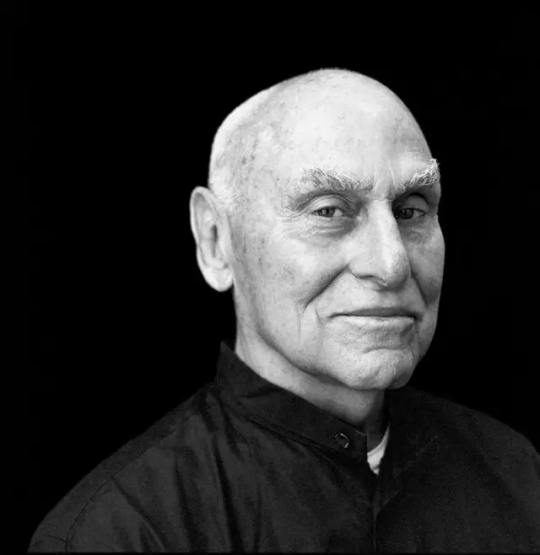
Richard Serra, who has died aged 85, was a remarkable cultural figure – a sculptor who belonged to the generation of American minimalists, was associated with process art and made experimental films, yet evoked something of an earlier, more heroic age. The critic Robert Hughes described him as “the last abstract expressionist”.
Although this statement stretches the point, Serra’s interest in the processes of sculpture led him to some extravagant gestural acts that belie the severity of his grand public commissions. Weight and Measure, made in the early 1990s for what is now Tate Britain, exemplified his austere side, with its massive steel forms designed to counter the building’s overbearing classicism. However, some of his other works, such as the twisting, “torqued” structures installed at the Guggenheim in Bilbao in 2005, are positively baroque.
Curled around an existing sculpture, Snake, that was commissioned for the museum’s opening in 1997, these steel works, dominated by ellipses and spirals, articulate spaces in which the gallery visitor can wander. They are monumental enough to take on Frank Gehry’s grandiose architecture, but, with their patinated surfaces and curved forms, also have an intimate, sensual quality. Above all, Serra’s sculptures create a remarkable interaction with the public and a strong experience of gradual discovery – hence the installation’s title, The Matter of Time.
His works have proved popular with curators, but are not confined to museums. They have appeared in settings as diverse as the Tuileries garden in Paris, the Federal Plaza in New York, and the Qatari desert, attracting responses from intense admiration to a public inquiry. One of his sculptures, Fulcrum, was put up in 1987 at Broadgate outside Liverpool Street station in London. It manages to combine monumentality with fragility, made of weathered steel plates that appear to support each other precariously.
He was born in San Francisco into a family that provided a foundation for his later career as a sculptor in metal. His father, Tony, who was from Majorca, was a pipe-fitter in a naval shipyard. His mother, Gladys (nee Fineberg), who was the daughter of Jewish immigrants from Odessa, used to introduce her son as “Richard, the artist” and was, later, touchingly enthusiastic when he began to make his way in New York. Serra himself laboured in steel mills during his time as a student and subsequently, in 1979, made a compelling film, Steelmill/Stahlwerk, about German workers in the industry.
Serra began his studies in 1957 at the University of California in Berkeley, graduating from the institution’s Santa Barbara campus with a degree in English literature. He followed this in 1961 with a three-year course in painting at Yale University, New Haven – a period in which he also worked as a teaching assistant and as a proof-reader for Joseph Albers’s book Interaction of Color (1963). At Yale he encountered such luminaries as Philip Guston, Robert Rauschenberg, Ad Reinhardt and Frank Stella, before winning a fellowship that took him to Europe in 1964.
In Paris, Serra was profoundly impressed by the sculpture of Constantin Brâncuși, but in Florence the following year he continued to paint, producing coloured grids in timed conditions controlled by a stopwatch. It was only with his first exhibition, at the Galleria La Salita in Rome in 1966, that he made a definitive move away from painting, filling cages with live and stuffed animals.
After moving to New York in the same year, Serra initially survived by setting himself up as a furniture remover, together with his friends, the composers Philip Glass and Steve Reich. Serra’s artistic development at this time was rapid, moving from experiments with rubber, fibreglass and neon tubing to the metal sculpture for which he became renowned. He soon began his long-term association with the Leo Castelli Gallery in New York, in whose Warehouse annex he was photographed in 1969 throwing molten lead at the wall with a ladle.
In the same year Serra refined this procedure by splashing the metal against a small steel plate stuck into the corner of Jasper Johns’s studio. The “castings” produced when the lead cooled down were rough, expressive forms, but this project also inspired Serra to create more impersonal pieces, in which metal sheets were wedged into the angles of rooms, leaned against each other or pinned to the wall by lead pipes. His emphasis on objective phenomena – mass, gravity and other physical forces – can also be seen in his remarkable experimental films.
In Hand Catching Lead (1968), the hand is in fact the artist’s but it is shown disembodied, trying to grasp rather than cast pieces of falling lead, which it drops or misses altogether. The repetition of this fundamentally pointless act gives the film a serial quality, akin to the celluloid process itself.
Serra’s engagement with the cutting edge also led him to work with the land artists Robert Smithson and Nancy Holt. In 1970 he assisted them with Spiral Jetty at the Great Salt Lake in Utah and, after Smithson’s death in 1973, Serra helped to complete Amarillo Ramp in an artificial lake in Texas. His own site-specific sculptures included Spin Out: For Bob Smithson (1972-73), in the park-like surroundings of the Kröller-Müller Museum at Otterlo in the Netherlands. Here the three converging steel plates interacted with each other and their environment, exemplifying Serra’s aim that “the entire space becomes a manifestation of sculpture”.
The 1970s was a difficult decade in Serra’s life. In 1971 a worker was killed in an accident during the installation of one of Serra’s sculptures outside the Walker Art Center in Minneapolis. His five-year marriage to the artist Nancy Graves ended in 1970, and his mother’s suicide in 1977 was followed two years later by the death of his father. However, in that decade he also met his future wife, the art historian Clara Weyergraf, with whom he collaborated on Steelmill/Stahlwerk. Clara was also to play a vital role in shaping his sculpture, as well as giving her name to Clara-Clara, a powerful, curvilinear work that was installed in the Tuileries garden in 1983. The history of this piece exemplifies Serra’s problems in making site-specific art, since it was originally intended to feature in a show at the Pompidou Centre, but at a late stage was deemed to be too heavy.
Clara-Clara’s travails were minor in comparison to the controversies surrounding Tilted Arc, a sculpture 36 metres long, set up at the Federal Plaza in Manhattan in 1981. Condemned for being intrusive, a magnet for graffiti artists and even a security risk, it was eventually removed in 1989, four years after a public hearing in which a majority of witnesses had advocated its preservation.
Despite this setback, Serra’s career continued to flourish. He had two retrospectives, in 1986 and 2007, at the Museum of Modern Art in New York, which also devoted a permanent room to his monumental work Equal (2015), as well as major exhibitions at home and abroad. He showed frequently with his gallery, Gagosian, in London, New York and Paris, most recently in 2021.
In 2001 he received a Golden Lion for lifetime achievement at the Venice Biennale, in 2015 the Légion d’honneur in France and, three years later, the J Paul Getty Medal.
During his latter years, Serra became heavily involved with public projects in Qatar, above all the four steel plates, rising to over 14 metres and spanning more than a kilometre, erected west of Doha in 2014. Known as East-West/West-East, the work engages spectacularly with its surroundings, the gypsum plateaux of the Brouq nature reserve in the Dukhan desert. Serra himself described it as “the most fulfilling thing I’ve ever done”.
He is survived by Clara.
🔔 Richard Serra, artist, born 2 November 1938; died 26 March 2024
Daily inspiration. Discover more photos at Just for Books…?
13 notes
·
View notes